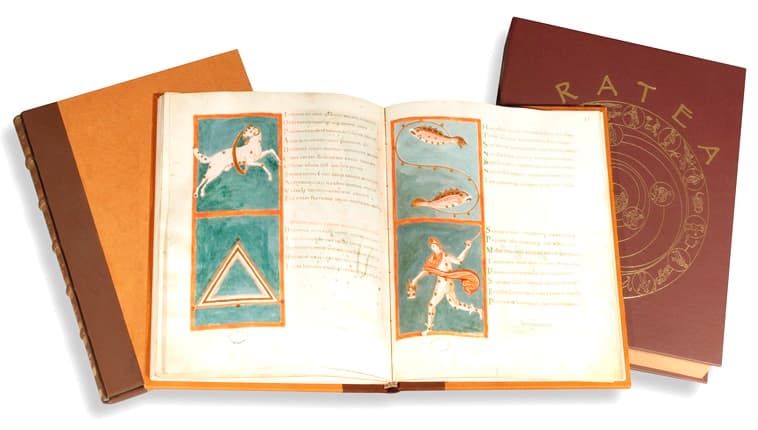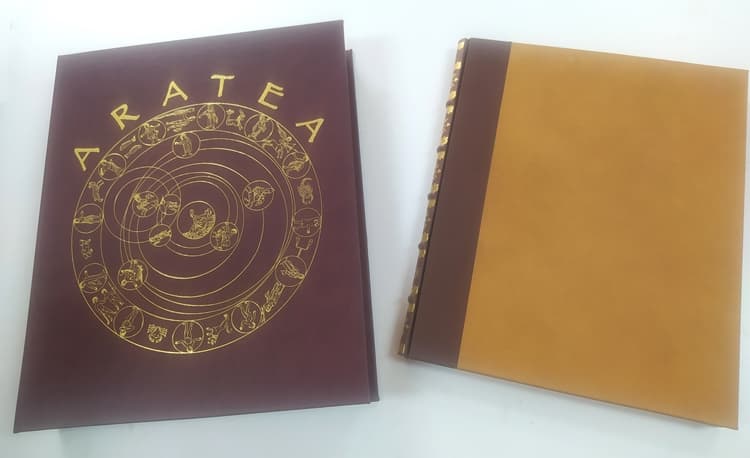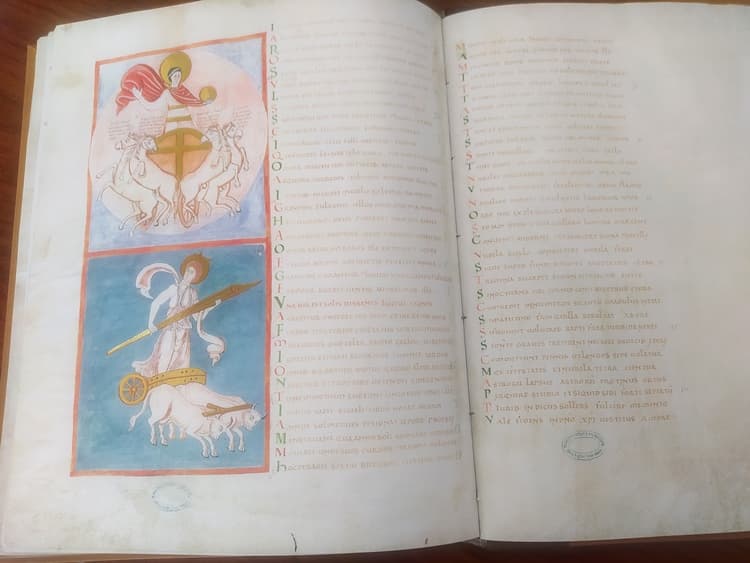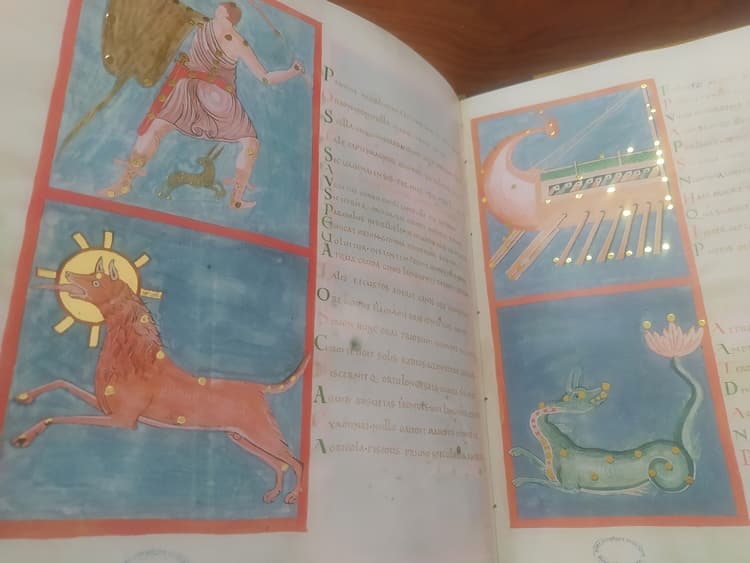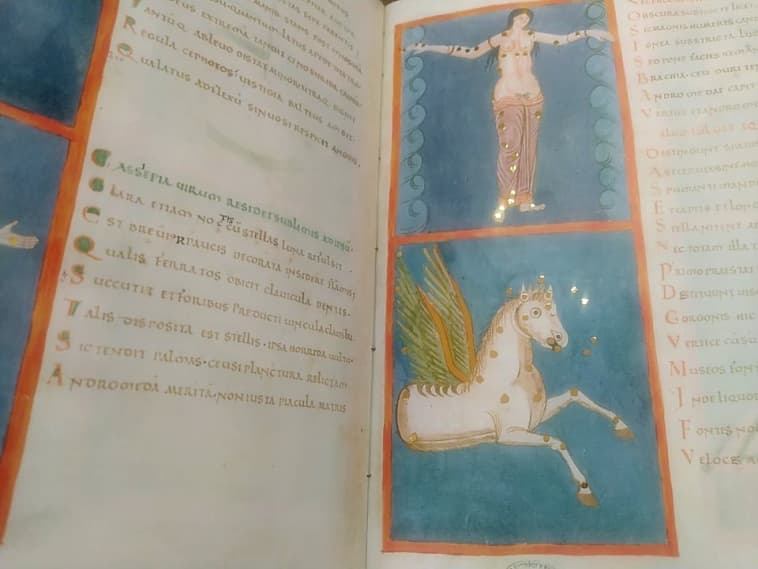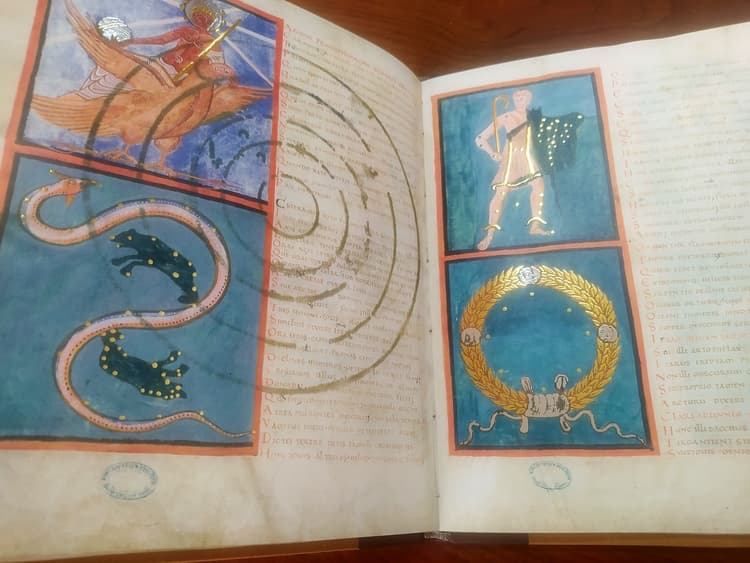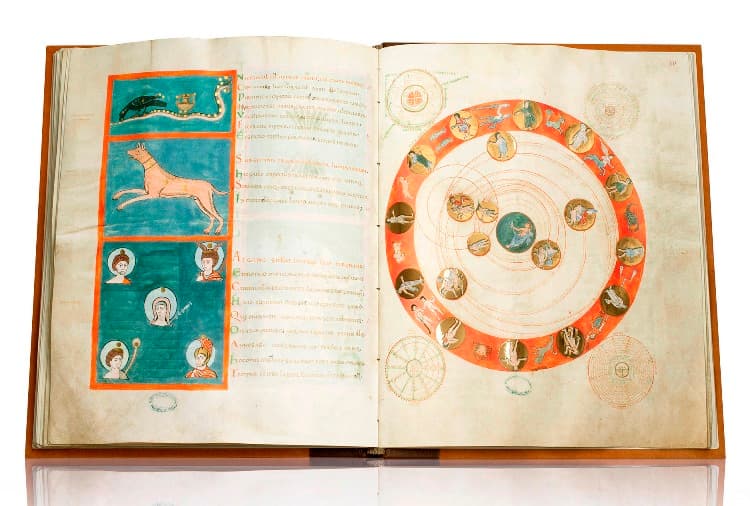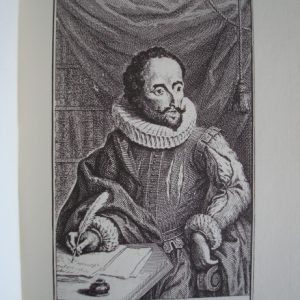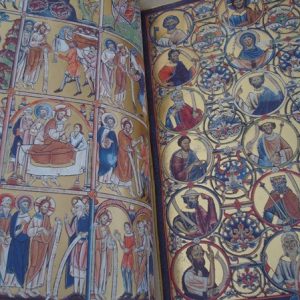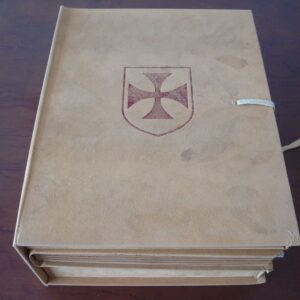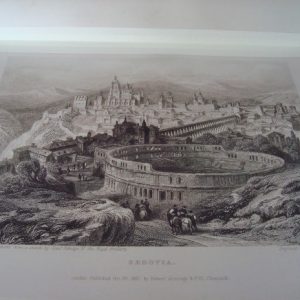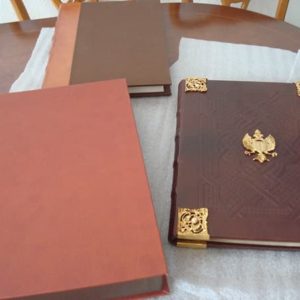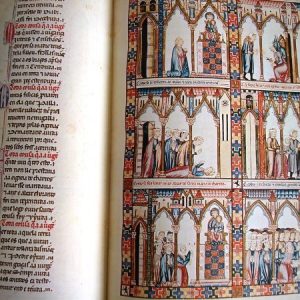Description
Facsimile edition of manuscript 188 from the 10th century from the Municipal Library of Annonciades in Boulogne-suer-Mer (France), Aratea, made by Incipit Manuscript. A fascinating journey through constellations and poetry in a 10th century treasure.
Facsimile bound in Dutch leather with printing on the spine, format 30 x 36 cm, 66 illuminated pages with 42 miniatures, 2 of them full page. Latin texts. Presented in a box-case for better conservation.
The study book that usually accompanies these fascinating facsimile editions is not yet published. As soon as it is edited, we will send it to you without any additional expense on your part.
Edition limited to 400 copies and numbered and authenticated with a notarial certificate.
This majestic ancient manuscript, known as the Aratea of Boulogne, is an extraordinary relic that offers a fascinating insight into the celestial and literary interests of bygone eras. This manuscript is believed to have been meticulously crafted at the venerated Abbey of Saint Bertin in Saint Omer, in the late 10th century.
The Aratea of Boulogne is embellished with 41 exquisite miniatures, each meticulously framing its poetic narrative in Latin. These depictions vividly illustrate the composition and relative positions of the constellations, presenting them as animals, humans, and objects against glowing blue backgrounds. Further highlighting, the exceptional pages (folios 20r and 30r) display a celestial planisphere and a circular planetary diagram, adorned with captivating personifications of the months, zodiacal signs, constellations and planets.
This manuscript presents an ancient Latin poetic translation attributed to Germanicus Caesar (d. 19 AD). It is a version of the Phaenomena, originally composed by the Greek poet Aratus of Soli in the 3rd century BC. This translation includes interpolations from another Latin version and expansions of Aratus’s work by Rufius Festo Avieno (4th century AD). Before the ancient astronomical text, there is a calendar and calendrical tables.
The rich color range of the manuscript is dominated by shades of red-orange, blue, violet and green, enhanced by the brilliance of silver and gold.
The celestial journey begins with a captivating depiction of the Roman god of the sky, Jupiter, reclining on his eagle (folio 20v). In this fascinating scene, Jupiter emerges half-naked, wrapped in a light purple robe, radiating a silver halo that displays seven resplendent rays. In his hands he holds a silver orb and a golden staff.
The constellations in this manuscript take various forms, transforming into Greco-Roman heroes, such as Hercules (folio 21r) and Perseus (folio 25r), as well as mythological figures, animals, hybrids, and inanimate objects. Among them, the majestic winged horse Pegasus (folio 24r) and the intriguing Centaur (folio 29r) stand out. Even the classic sea monster, Cetus, takes on a unique form, looking like a dog with a fantastic fish tail (folio 28r).
An intriguing element is the use of gold dots, which indicate the location of stars in the constellation miniatures, serving as celestial guides. Although slightly worn over time, these dots used to mark the stars in the constellation illustrations, even on the full-page planisphere.
The Aratea of Boulogne is an extremely extraordinary specimen, of which only three illuminated copies of this Latin adaptation of Aratus’ poem are known. Although it shares textual and visual links with the 9th-century Leiden Aratea, it remains an intriguing enigma whether the creators of the Boulogne manuscript were directly inspired by the Leiden manuscript.
Both the Leiden and Boulogne manuscripts feature texts written in Rustic Capitals, the typeface used for literary texts in late ancient Rome. Its texts and images refer to models from late antiquity. In the calendrical and computational tables of the Aratea of Boulogne (used to calculate the dates of Christian festivals), another ancient Roman font, the round capital letter known as Uncial, is liberally used (folios 1-10). Only the explanation of the tables is inscribed in the minuscule Carolina characteristic of the period (folios 11-19).
This venerable manuscript has traveled through time, from its origins in a medieval monastery to its current home in a modern library. It is one of 81 manuscripts selected from the renowned Saint-Bertin monastery after the French Revolution to find their place in the newly created Municipal Library in the coastal town of Boulogne-sur-Mer.
Copy in perfect condition, new, unused.
Free shipping for this item. Ask us any questions, indicating the article reference.




